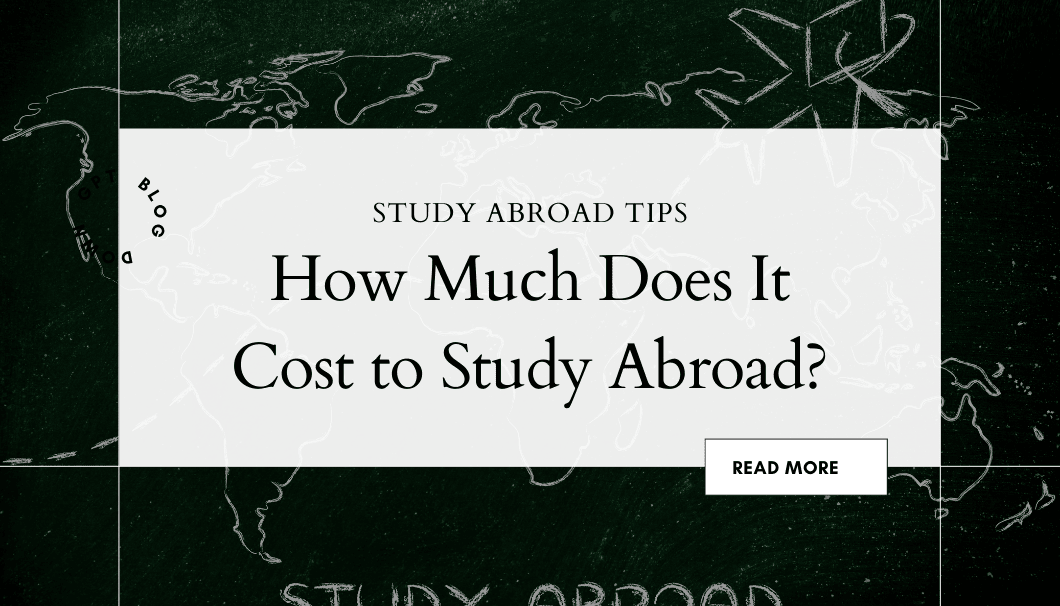For many students, studying abroad is a dream, but the first big question is always: how much does it cost to study abroad? The truth is, the answer depends on your destination, program type, and lifestyle choices. On average, a semester abroad can cost anywhere between $10,000 and $30,000, but your actual expenses may be higher or lower depending on how you plan.
Typical Cost of Studying Abroad at a Glance
A quick estimate helps set expectations. Direct enrollment in public universities abroad can sometimes be as low as a few thousand dollars per semester, while third-party provider programs, where housing, support services, and excursions are included, usually cost between $15,000 and $22,000 for one semester. Add in airfare, visas, and insurance, and the total budget can rise quickly.
Main Factors That Shape the Cost
Program Type Matters
If you directly enroll in a foreign university, you usually pay their tuition fees, which can be surprisingly affordable in countries like Germany or France. On the other hand, third-party providers bundle services such as housing, academic support, and orientation, but this convenience comes with a higher price tag.
Destination and Cost of Living
Choosing a study abroad destination plays a huge role in budgeting. A semester in Western Europe or Australia will almost always cost more than one in Latin America or Southeast Asia. Rent, food, and daily expenses vary widely by country and even by city.
Duration and Course Load
Short-term programs like summer sessions are usually cheaper overall but more expensive per week. Full-year or semester-long programs may seem costly upfront but provide more credits and value over time.
Personal Lifestyle Choices
How much you spend abroad also depends on your habits. Cooking at home, using public transport, and traveling less on weekends can save thousands compared to dining out and frequent trips across borders.
Budget Breakdown: What to Expect
A typical study abroad budget has several line items. Here’s what most students should plan for:
- Tuition and Program Fees: Direct enrollment can range from $1,500 to $6,000, while provider programs often average $17,000–$21,000.
- Housing: University dorms or shared apartments may cost $400–$1,200 per month, depending on the city.
- Food: Groceries might be $200–$400 monthly, while eating out adds more.
- Flights: A round-trip ticket can range from $800 to $1,500, depending on the distance and season.
- Visa and Permits: Many countries require residence permits or student visas, often between $100 and $600.
- Insurance: Health and travel insurance may cost $300–$600 for a semester.
- Books and Academic Fees: Lab courses, field trips, or required excursions can add another $200–$500.
- Miscellaneous Expenses: Think about phone data, weekend trips, and small household items, around $100–$300 per month.
Comparing Countries by Cost
- Western Europe: Studying abroad in cities like Paris, Rome, or Barcelona often costs around $18,000–$22,000 per semester if using a provider program. Direct enrollment in public universities, however, can reduce tuition dramatically.
- Australia & New Zealand: Tuition is generally higher, with semester totals often exceeding $20,000 including living costs.
- Asia & Latin America: Countries like Thailand, Vietnam, or Mexico usually offer more affordable tuition and lower living expenses, making them attractive for budget-conscious students.
- Germany & France: Direct enrollment at public universities may only require small administrative fees, though living costs in major cities are still significant.
Direct Enrollment vs. Third-Party Providers
One of the most important financial decisions is whether to directly enroll in a university abroad or use a study abroad provider. Direct enrollment is almost always cheaper in terms of tuition but requires more independence, you’ll need to arrange your own housing, manage your visa, and adapt quickly. Providers, on the other hand, are more expensive but offer structured support, cultural activities, and guaranteed credit transfer.
Estimating Your Personal Study Abroad Budget
The best way to estimate costs is by comparing your home university’s cost of attendance with your study abroad program’s budget. Start by looking at tuition and housing costs, then add airfare, visa fees, insurance, and living expenses. Don’t forget to factor in currency exchange rates and inflation, which can change your final spending.
Smart Ways to Save Money Abroad
Studying overseas doesn’t have to break the bank. Consider these strategies:
- Apply for scholarships and grants specifically for international students.
- Choose a destination with lower living costs.
- Fly during off-peak seasons to reduce airfare.
- Cook at home and use public transportation.
- Enroll directly at universities in countries where tuition is subsidized for international students.
Sample Budget Scenarios
Example 1: Third-Party Provider in Western Europe
- Tuition & Fees: $18,000
- Housing & Meals: $4,500
- Flights & Insurance: $1,500
- Miscellaneous: $2,000
Total: $26,000
Example 2: Direct Enrollment at a Public University in Germany
- Tuition & Fees: $2,000
- Housing & Meals: $4,000
- Flights & Insurance: $1,200
- Miscellaneous: $1,500
Total: $8,700
Conclusion: What You Really Need to Know
The cost to study abroad varies widely, but most students spend between $10,000 and $30,000 per semester. Your choices, destination, program type, and lifestyle, will decide where you fall on that scale. By comparing your home university’s expenses with potential overseas budgets, you can make an informed decision. And remember, scholarships and careful planning can make studying abroad more affordable than you think.
